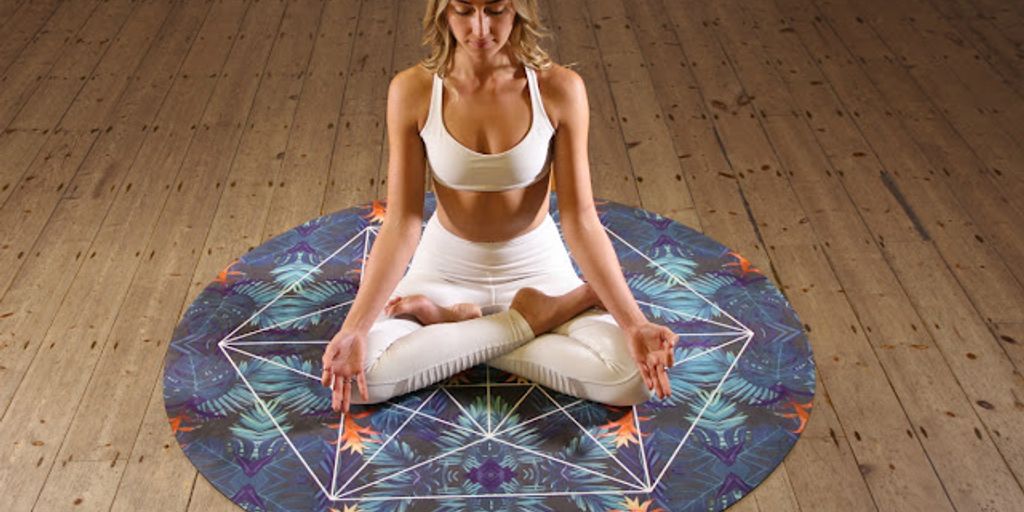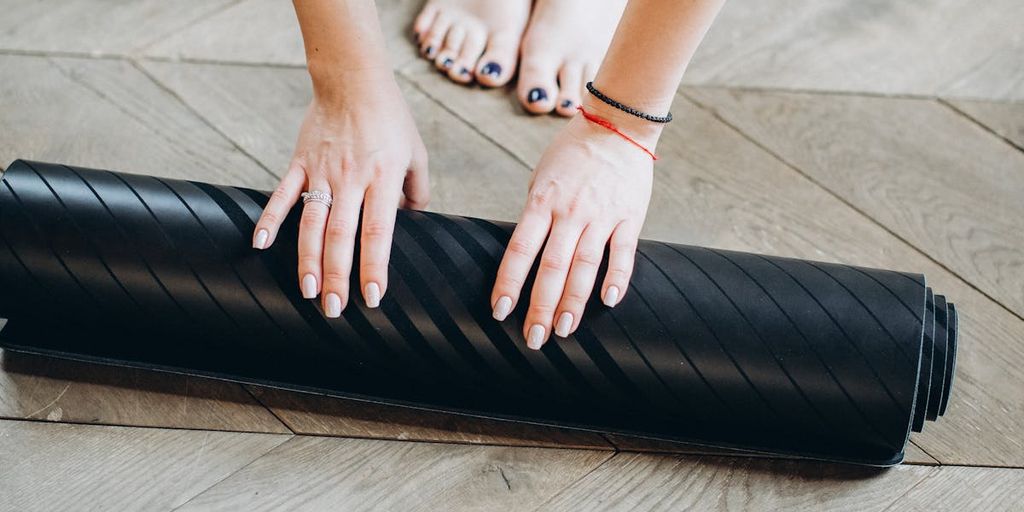
Choosing the Perfect Material for Your Yoga Mat: A Comprehensive Guide
Choosing the right material for your yoga mat is crucial for enhancing your practice and ensuring comfort, durability, and safety. With a plethora of materials available, each offering unique benefits and drawbacks, it can be overwhelming to make an informed decision. This comprehensive guide will help you navigate through the different options, from natural rubber to eco-friendly choices, and consider factors such as durability, comfort, and cost, to find the perfect yoga mat material for your needs.
Key Takeaways
- Natural rubber mats offer excellent grip and eco-friendliness but can be heavy and may cause latex allergies.
- PVC mats are durable and affordable but are not environmentally friendly and may contain harmful chemicals.
- TPE mats provide a balance between eco-friendliness and performance, offering good durability and grip.
- Eco-friendly options like cork, organic cotton, and jute are sustainable but may require more maintenance.
- Investing in a high-quality yoga mat can provide long-term benefits, including better performance, comfort, and durability.
Understanding Different Yoga Mat Materials
Natural Rubber: Pros and Cons
Natural rubber yoga mats are known for their excellent grip and eco-friendliness. They are biodegradable and made from renewable resources. However, they can be heavy and may have a distinct smell initially. People with latex allergies should avoid natural rubber mats.
PVC: Benefits and Drawbacks
PVC (Polyvinyl Chloride) mats are popular due to their durability and affordability. They offer good cushioning and are easy to clean. On the downside, PVC is not eco-friendly and can release harmful chemicals over time. Consider PVC mats if you need a budget-friendly option but are not concerned about environmental impact.
TPE: Features and Considerations
TPE (Thermoplastic Elastomer) mats are a newer option that combines the benefits of rubber and plastic. They are lightweight, recyclable, and free from harmful chemicals. TPE mats provide good grip and cushioning but may not be as durable as natural rubber or PVC mats. They are a great choice for those looking for a balance between performance and eco-friendliness.
When choosing a yoga mat material, consider your priorities such as grip, eco-friendliness, and budget to find the perfect match for your practice.
Eco-Friendly Yoga Mat Options
Cork Yoga Mats
Cork yoga mats are a popular eco-friendly option due to their sustainable harvesting methods. They offer excellent grip and are naturally antimicrobial, making them a hygienic choice for yogis. Cork mats are also biodegradable, ensuring they won't contribute to landfill waste.
Organic Cotton Yoga Mats
Organic cotton yoga mats provide a soft and comfortable surface for practice. They are made from natural fibers that are free from pesticides and chemicals, making them a great choice for those with sensitive skin. These mats are also highly absorbent, which can be beneficial for hot yoga sessions.
Jute Yoga Mats
Jute yoga mats combine the durability of synthetic materials with the eco-friendliness of natural fibers. They offer a textured surface that enhances grip and stability during poses. Jute mats are also biodegradable and often blended with PER (Polymer Environmental Resin) to improve their longevity and performance.
Choosing an eco-friendly yoga mat not only benefits your practice but also supports a healthier planet. Consider the material's sustainability, comfort, and performance when making your selection.
Durability and Longevity of Yoga Mat Materials
Wear and Tear Resistance
When selecting a yoga mat, it's crucial to consider how well it can withstand wear and tear. Natural rubber mats are known for their durability, making them a popular choice for frequent practitioners. On the other hand, PVC mats, while durable, may not be as eco-friendly. TPE mats offer a balance between durability and environmental impact.
Maintenance Tips
Proper maintenance can significantly extend the lifespan of your yoga mat. Regular cleaning with a mild detergent and water can help maintain the mat's texture and grip. Avoid exposing your mat to direct sunlight for prolonged periods, as this can degrade the material. Rolling up your mat after each use can also prevent creases and tears.
Material Lifespan
The lifespan of a yoga mat largely depends on the material. Natural rubber mats can last several years with proper care, while PVC mats may have a slightly shorter lifespan. TPE mats are designed to be durable but may not last as long as natural rubber. Investing in a high-quality mat can provide long-term benefits, making it a worthwhile investment for serious practitioners.
Comfort and Support in Yoga Mats
Thickness and Cushioning
When it comes to comfort, the thickness of a yoga mat plays a crucial role. Thicker mats provide more cushioning, which can be beneficial for those with sensitive joints or those who prefer a softer surface. However, thicker mats can also be less stable, making balance poses more challenging. It's essential to find a balance that suits your practice style and physical needs.
Texture and Grip
The texture of a yoga mat affects its grip and your overall stability during practice. Mats with a textured surface offer better grip, which is especially important during sweaty sessions. Smooth mats, on the other hand, may feel more comfortable but can become slippery. Consider your practice environment and personal preference when choosing the texture of your mat.
Temperature Regulation
Some yoga mats are designed with materials that help regulate temperature, ensuring you stay comfortable throughout your practice. This feature is particularly useful for hot yoga sessions. Mats made from natural materials like cork and jute tend to have better temperature regulation properties compared to synthetic options.
Finding the right balance between comfort and support in your yoga mat can significantly enhance your practice experience. Explore different materials and thicknesses to discover what works best for you.
Allergy and Sensitivity Considerations
When selecting a yoga mat, it's crucial to consider any allergies or sensitivities you may have. Hypoallergenic materials are designed to minimize the risk of allergic reactions, making them a safe choice for many individuals. These materials are often free from common allergens and irritants, providing a more comfortable experience during your practice.
Hypoallergenic Materials
Hypoallergenic yoga mats are crafted from materials that are less likely to cause allergic reactions. Some popular hypoallergenic options include natural rubber, organic cotton, and TPE. These materials are not only gentle on the skin but also environmentally friendly.
Chemical-Free Options
For those with sensitivities to chemicals, choosing a yoga mat that is free from harmful substances is essential. Look for mats that are labeled as non-toxic and free from PVC, phthalates, and other harmful chemicals. This ensures that you can practice without worrying about exposure to potentially harmful substances.
Skin-Friendly Choices
Skin-friendly yoga mats are designed to be gentle on the skin, reducing the risk of irritation or discomfort. Materials like organic cotton and natural rubber are excellent choices for those with sensitive skin. Additionally, these mats often have a softer texture, providing a more pleasant surface to practice on.
When choosing a yoga mat, always consider your personal needs and sensitivities. A mat that works well for one person may not be suitable for another. Take the time to research and select a mat that aligns with your specific requirements for a comfortable and enjoyable practice.
Cost vs. Value: Investing in a Quality Yoga Mat
Budget-Friendly Materials
When it comes to budget-friendly yoga mats, materials like PVC and TPE are often the go-to choices. These mats are generally affordable and provide decent durability and grip. However, they may not offer the same level of comfort and longevity as higher-end options.
High-End Options
For those willing to invest more, natural rubber and cork yoga mats are excellent choices. These materials offer superior grip, comfort, and durability, making them worth the higher price tag. Additionally, they are often more eco-friendly, which is a significant consideration for many yoga practitioners.
Long-Term Investment Benefits
Investing in a high-quality yoga mat can save you money in the long run. A durable mat will last longer, reducing the need for frequent replacements. Moreover, a high-quality mat can enhance your practice by providing better support and comfort, which can be invaluable for your overall well-being.
Choosing the right yoga mat is not just about the initial cost but also about the value it brings to your practice over time. A well-chosen mat can be a long-term investment in your health and wellness.
When it comes to yoga, the right mat can make all the difference. Investing in a quality yoga mat not only enhances your practice but also provides the support and durability you need. Discover our range of high-quality mats designed to meet all your yoga needs. Visit our website to explore our collection and find the perfect mat for you.
Conclusion
Choosing the perfect material for your yoga mat is a personal journey that depends on various factors including comfort, durability, eco-friendliness, and budget. By understanding the pros and cons of different materials such as PVC, TPE, natural rubber, and cork, you can make an informed decision that aligns with your yoga practice and lifestyle. Remember, the right yoga mat can enhance your practice, providing the support and stability you need to achieve your fitness goals. Take your time to explore your options and invest in a mat that will serve you well for years to come.
Frequently Asked Questions
What is the best material for a yoga mat?
The best material for a yoga mat depends on your preferences and needs. Natural rubber, PVC, and TPE are popular choices, each with its own pros and cons.
Are eco-friendly yoga mats durable?
Yes, eco-friendly yoga mats made from materials like cork, organic cotton, and jute are durable and can last a long time with proper care.
How thick should a yoga mat be for comfort?
A yoga mat should generally be between 4mm to 6mm thick for optimal comfort and support, but this can vary depending on personal preference and the type of yoga practiced.
Can I clean my yoga mat with regular household cleaners?
It's best to use a cleaner specifically designed for yoga mats or a mild soap and water solution to avoid damaging the material.
Are there hypoallergenic yoga mats available?
Yes, there are hypoallergenic yoga mats available made from materials like natural rubber and TPE, which are less likely to cause allergic reactions.
Is it worth investing in a high-end yoga mat?
Investing in a high-end yoga mat can be worth it if you practice regularly, as they often offer better durability, support, and overall quality.


